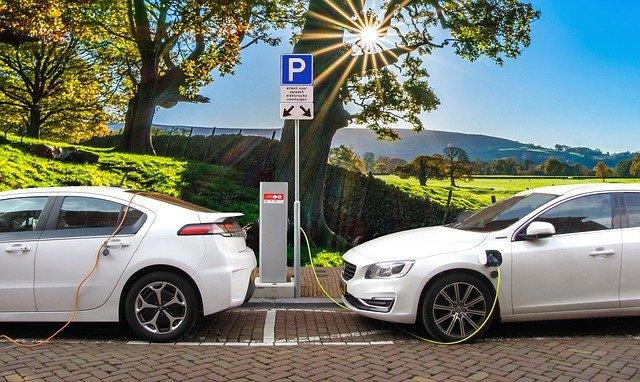289
views
views

North America is currently the most advanced and competitive automotive market in terms of the electric vehicle production and distribution.
As the automotive industry moves toward electrification, the oil & gas industry faces a huge challenge of adapting to a market which renders most of its products obsolete. As electric vehicle does not require any engine oils or diesel and gasoline, many of these companies are bound to face an extinction. However, in the past few years, these companies have changed their business strategies toward developing and investing toward electric vehicle applications for their products. An important observation made here was the steady change in demand for fluids in the electric vehicle industry.
The increasing application areas for new fluids in an electric vehicle have led to the surging demand for various types of coolants and lubricants. Automotive OEMs have partnered with various fluid providers for sourcing fluids for their electric vehicles to improve the driving experience, which in turn, can increase the electric vehicle sales. Moreover, huge investments in the form of subsidies and infrastructure development by government and federal agencies to promote electric vehicles to cut down carbon dioxide emission are further propelling the growth of electric vehicle fluids. However, certain technical challenges, such as higher cost and the viability of developing immersion cooling battery systems are restraining the growth of the global fluids and lubricants market for electric vehicles.
Heat Transfer Fluids Generate the Highest Demand Amidst the EV Fluid Products:
The prominent types of fluids which are being developed for application in electric vehicles are greases, heat transfer fluids, driver system fluids, and brake fluids. The application of these types of fluids is in various components such as e-motors, battery systems, bearings, constant velocity joints, power electronics, gears, and the braking system of electric vehicles. Generally, various components of an electric vehicle generate a lot of heat during the operation of the vehicle, such as the battery system and the e-motors. These components led to the need for better thermal management in these vehicles. The new EV fluids have added additives and dielectric properties which makes them suitable for application in electric vehicle components. These specialized fluids are able to provide have better thermal management properties than regular coolants. Heat transfer fluids market are anticipated to be the largest as the need for coolants in electric vehicles is very critical to cool the battery and increase its driving range.
Asia-Pacific to Witness Fastest Growth in Global Fluids and Lubricants Market for EVs:
The demand for electric vehicle fluids varies according to various geographical regions. Asia-Pacific is currently the largest region in the fluids market for electric vehicles. Government regulations, technological advancements, extensive investments for dedicated R&D facilities, and presence of major EV manufacturing companies are some of the major drivers that are propelling the growth of the market in the region. Rising CO2 emissions in China and Japan have led to several concerns from the countries’ governments.
Supply Chain Network / MAP:
Multiple stakeholders that are involved across the electric vehicle ecosystem impact the fluids and lubricants market through various trends within their core businesses. The supply chain analysis refers to a process of analyzing a system of organizations, people, activities, information, and resources involved in moving a product or service from supplier to end user. The supply chain analysis in the following figure includes the analysis of EV fluids from the point of the raw material suppliers to the end users.
North America:
North America is currently the most advanced and competitive automotive market in terms of the electric vehicle production and distribution. The presence of automotive giants such as Ford, Tesla, GM, and Fiat Chrysler which are responsible for the cruising sales of electric vehicles in the region. North America has the privilege of having major automotive OEMs, battery component manufacturers, tier 1 suppliers, and lubricants manufacturers concentrated in the region. The U.S. is a major market leader in North America supported by the popularity of Tesla.
Key Manufacturers and Suppliers in North America:
Key manufacturers of global fluids for electric vehicles operating in North America include 3M, Exxon Mobil Corporation, Lubrizol Corporation, Afton Chemical, Valvoline Inc., PolySi Technologies Inc., Dober, Engineered Fluids, and Klüber Lubrication, among others. They provide an impetus to the growing EV market with their advanced fluids designed for electric vehicles. The customers for the products include OEMs, battery, and electric motor manufacturers such as: Tesla, Ford, Nissan, General Motors, D&D Motor Systems, Federal-Mogul, Borg Warner Inc., and LG Chem, among others.
Key Questions Answered in this Report:
• Which EV fluid type segment is expected to witness the maximum demand growth in the global fluids market for electric vehicles during 2019-2029?
• What is the patent landscape for the global fluids and lubricants market for electric vehicles?
• Which are the key EV parts that generate demand for different types of fluids and lubricants and which of these parts would help foster the future demand for different types of fluids and lubricants?
• Which are the players that are catering to the demand for different EV fluids?
• What are the key offerings of the prominent companies in the market for fluids for electric vehicles?
• Which regions and countries are leading in terms of consumption of global fluids market for electric vehicles, and which of them are expected to witness high demand growth from 2019 to 2029?
• How does the pricing of different fluids and lubricants vary across regions and countries?
Download the free sample of the Electric Vehicles Fluids and Lubricants report, prepared by Bis Research:













